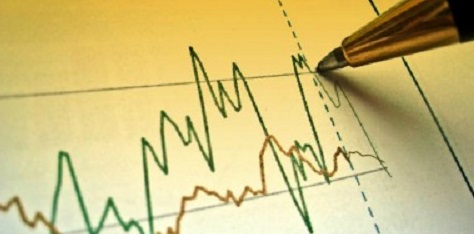 In the autumn forecast on which the 2018 budget is based, the National Commission for Prognosis, an institution under the Government’s authority, increased the economic growth projection for the current year to 6.1%, from the level of 5.6% announced only a few weeks ago in the preliminary autumn forecast.
In the autumn forecast on which the 2018 budget is based, the National Commission for Prognosis, an institution under the Government’s authority, increased the economic growth projection for the current year to 6.1%, from the level of 5.6% announced only a few weeks ago in the preliminary autumn forecast.
The value used as a benchmark for the 2017 GDP (including for the general budget deficit, which threatens to exceed 3%), went up again. Started from RON 815.2 billion at the beginning of the year, it reached along the way (somewhere after the summer vacation) RON 837.1 billion and now it is mentioned the level of RON 842.5 billion.
*
- Year
- Version Q1
- Version Q2
*
Not only the GDP result for the current year has been re-evaluated upwards by 0.65% but also all values until 2021. To be mentioned, all the values projected for the euro/ leu average annual exchange rate have been maintained, decreasing from 4.56 lei/euro for the current year to 4.50 lei in 2021 (?).
A warning signal for those who closely follow the data of the national economy, the annual GDP values for the interval until 2021, expressed in billions of euros, have been removed from the usual form of the table presented by CNP. From the values related to GDP/inhabitant, only those in RON remained while those expressed in EUR/inhabitant have disappeared.
Explanation is sublime
The CNP’s explanation for the spectacular and so far, one-time increase of the GDP growth estimate by half a percentage point in just a few weeks could only be found at the level of a radical change in the gross value added in the economy. Let’s see what the re-evaluation of the development pace in the main economic sectors indicates:
*
- Increase of 2017 gross value added in the economy Q1 Q2 change
- Industry
- Agriculture
- Construction
- Services
*
As the growth rate of the other component of GDP, net taxes on the product stagnated at + 4.2%, it results that the increase in the economic growth estimate appeared after the industry (the main engine of the Romanian economy) and agriculture have been re-evaluated significantly downward and services have changed their growth up by only a tenth of a percent.
The only plausible explanation (which should also cover the declines in the industry and agriculture!) comes from the construction sector, where the change from 1.5% to 7% within a few weeks appears to be quite bizarre. The correct recording of the production obtained and, particularly, of the intermediary consumption based on which it has been obtained, should be carefully monitored.
Change trick – 6.4% growth in second semester of 2017!
Without the need for in-depth knowledge of mathematics, let us simplify the situation at this point in relation to GDP developments in the second half of the year. For the first part of the year, we already have the seasonally adjusted value published by INS at the level of + 5.8%.
From the preliminary version, we knew that there would be a slight growth slowdown to only + 5.4% in the second half of the year, from which a perfectly plausible and otherwise very good 5.6% level for the entire 2017 would have resulted.
Now we have found ourselves with an AVERAGE OF 6.1% FOR THE WHOLE 2017. What does that mean? Well, like in the elementary school, it means that we need not just + 5.4% in the second half of the year to obtain the average level, but + 6.4%! That is, not some slowdown in growth but rather a strong acceleration, with a new record at the European level in the field.
For this purpose, the GDP deflator, which measures the prices in the economy and by which nominal GDP values decrease then to make the transition to the base period prices, more accurately THE REAL ECONOMIC GROWTH, has been discreetly increased from 4.1% to 4.2%. And that even though inflation measured by the consumer price index has been re-evaluated upwards from 1.9% to 2.2% (and from 2.3% to 2.6% in 2018, when the deflator still appears at 2.1 !?).
Obviously, the situation created by these disruptions of indicators from which the forecasted GDP growth results resembles the jokes with Radio Erevan. That would be a good occasion for jokes about statistics if CNP data were not the basis for 2018 budgeting process. A year when we might not find ourselves in the mood for jokes anymore.











